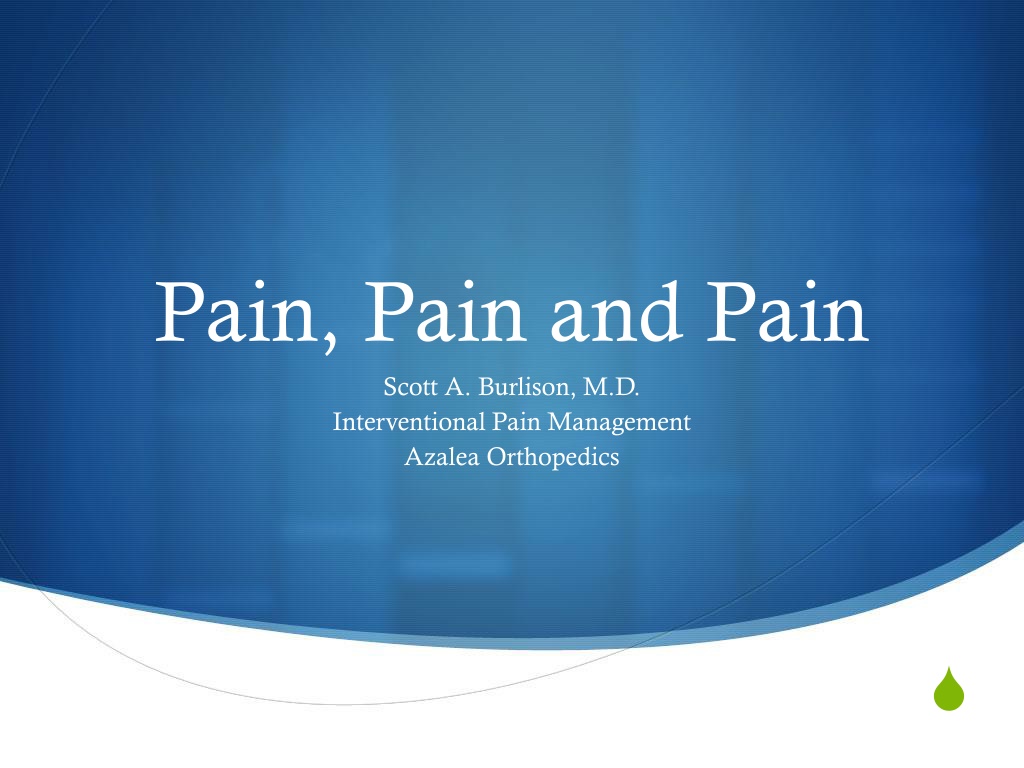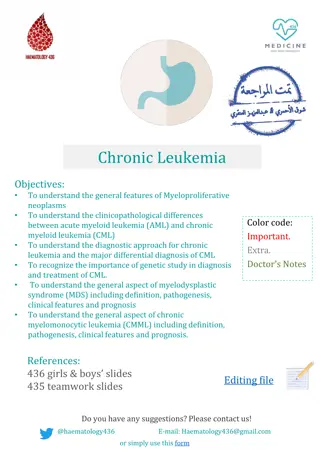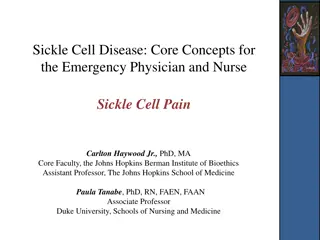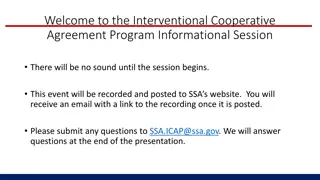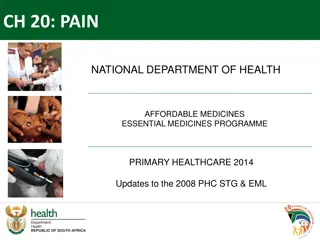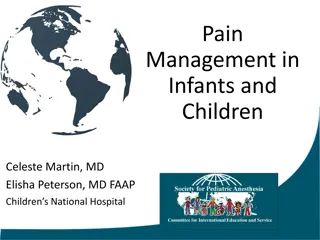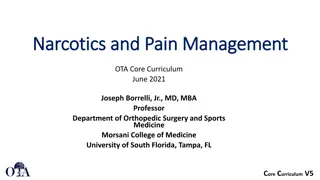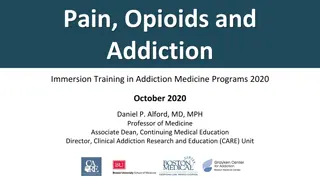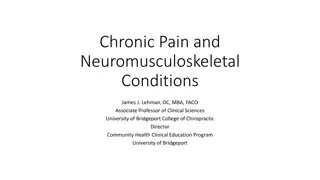Understanding Pain Management: Acute vs. Chronic Pain and Interventional Therapies
Pain is a complex experience that can be acute or chronic, requiring different treatment approaches. Acute pain alerts us to potential injury, while chronic pain lasts longer and affects quality of life. Management options range from medical and psychological treatments to advanced interventions and surgical procedures. Implantable pain therapies like neurostimulation and targeted drug delivery offer hope for those with severe, persistent pain conditions.
Download Presentation

Please find below an Image/Link to download the presentation.
The content on the website is provided AS IS for your information and personal use only. It may not be sold, licensed, or shared on other websites without obtaining consent from the author. Download presentation by click this link. If you encounter any issues during the download, it is possible that the publisher has removed the file from their server.
E N D
Presentation Transcript
Pain, Pain and Pain Scott A. Burlison, M.D. Interventional Pain Management Azalea Orthopedics
My Pathway Born in Shreveport, Louisiana Elementary through medical school in Louisiana Residency UTMB, Anesthesiology Private practice anesthesiology Tyler Fellowship- UTMB, Anesthesiology, Pain Management Private Practice Azalea Orthopedics
Pain An unpleasant sensory and emotional experience associated with actual or potential tissue damage, or described in terms of such damage No one likes it Can manifest in a lot of ways
Acute Pain vs Chronic Pain Acute pain- normal sensation that alerts us to possible injury Chronic pain any pain lasting more than 12 weeks (3 months)
Acute Pain Office setting Emergency setting Surgical setting Preoperative Intraoperative Postoperative
Chronic Pain Myriad of treatments Medical management Psychological management Physical/Occupational therapy Massage Interventional management Advanced interventional management Surgical management
Implantable Pain Therapies Neurostimulation Targeted Drug Delivery Delivery of low-voltage electrical stimulation to the spinal cord to inhibit or mask the sensation of pain Delivers precise doses of prescribed medication directly into the cerebrospinal fluid(CSF) to modulate the transmission of pain signals
Implantable Therapy Realistic expectations Sufficient pain relief ADL s improve Increased ROM Overall improvement in quality of life
Neurostimulation Indications Failed Back Surgery Syndrome (FBSS) Radicular pain syndrome Post laminectomy pain Multiple back surgeries Degenerative Disk Disease/herniated disc refractory to conservative and surgical intervention CRPS Epidural Fibrosis/ Arachnoiditis Ischemic leg pain Angina
Neurostimulation Psychological evaluation Trial period 3-7 days Successful trial defined as: >50 % relief in pain/symptoms ADL s improved Able to take less medications? Life was better
Neurostimulator Lead Placement
Spinal Cord Stimulators Medtronic Nevro
Intrathecal Drug Delivery Psychological evaluation Single shot vs catheter trial Duramorph Baclofen Ziconotide >50% pain/symptom relief
Targeted Drug Delivery Indications Failed Back Surgery Syndrome Degenerative Disc Disease Spinal Stenosis Radicular Leg pain CRPS Compression Fractures Cancer Pain Spasticity
Logistics Refill schedule -1 month, 3 month, 6 months Internal Support Problem(s)
Intrathecal Therapy Refill Programming
Usually lower quadrant placement Occasional back
Medtronic Synchromed II Very common
Coders Absolutely essential the entire way
